10.1 Describing fields
Fields
A field exist when one object is able to exert a force on another object at a distance.
| Electric fields | Gravitational fields |
|---|---|
| An electrostatic force exists between charged objects | A gravitational force exists between objects |
| Associated with positive and negative charge | A gravitational field is associated with each mass. It acts on other masses in the field |
| When the two objects have the same charge, the force between them is repulsive. When two objects have opposite charge, the force between them is attractive. | Gravity is always an attractive force. |
Field strength
| Electric fields | Gravitational fields |
|---|---|
| The direction of the field is the same as the direction of the force acting on a positive charge. | Gravitational force is always attractive. |
| Measured in N C-1 | Measured in N kg-1 |
Energy
| Electric fields | Gravitational fields |
|---|---|
| Potential difference | Potential energy |
|
|
|
| Measured in volts. | Applies only when g is relatively constant over the height change. |
Field lines - electric fields
Field lines visualise the shape of the electric field that arises from static charges.
The electric field between two parallel plates: is uniform betweeen the plates and becomes weaker at the edges (edge effects).

The strenght of the electric field depends on the potential difference between plates.
The lines of equal potential difference between two plates are equipotentials.
Equipotentials: are regions where charges can move without work being done, are cut by field lines at 90°, and are scalars.
Field due to a single point charge (radial field)

Field due to two point charges of the opposite sign
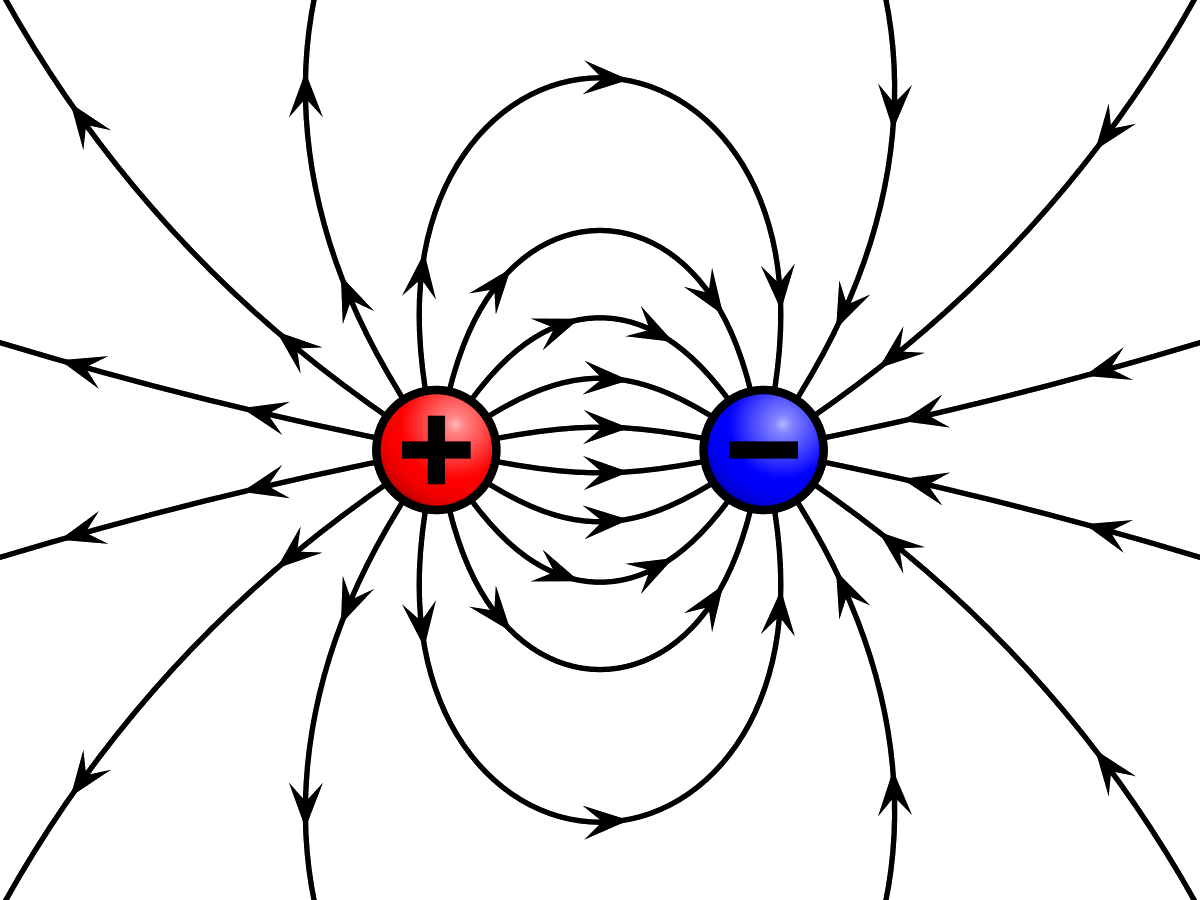
Field between a point charge and a charged plate

The electric potential at a point is the work done in bringing a unit positive test charge from infinity to the point.
Fields and equipotentials in gravitation
Gravitational fields that surround a point are radial fields.
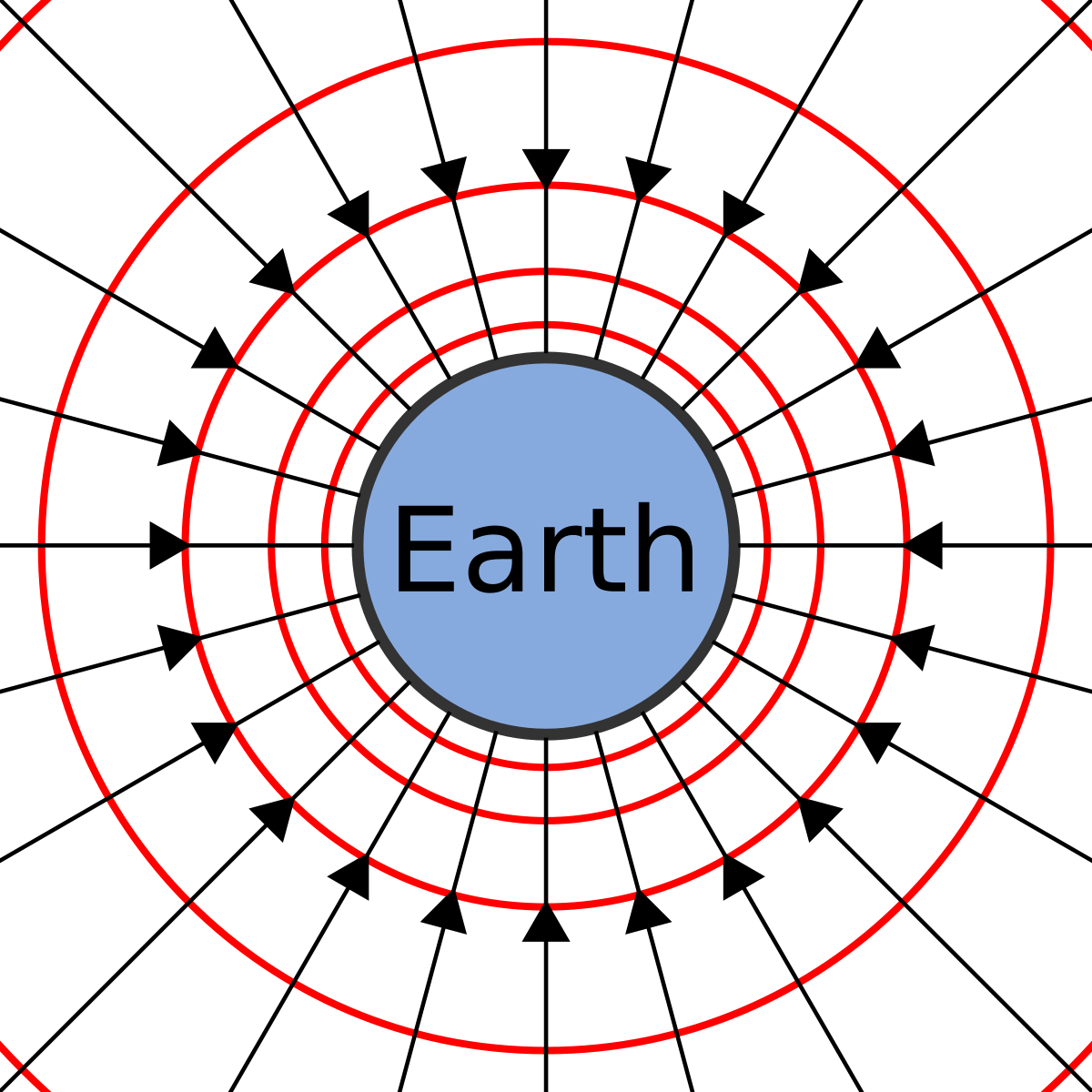
Gravitational potential difference is the work done in moving a unit mass between two points.
Gravitational potential is defined to be zero at infinity
When the distance is very large, the gravitational force decreases to 0.
Gravitational potential at a point is defined to be work done per unit mass in moving a test mass from infinity to the point.
 Gravitational & Electric Fields - video explanation
Gravitational & Electric Fields - video explanation
10.2 Fields at work
Forces and inverse-square law behaviour
Both fields obey an inverse-square law, where the force between the objects is inversely proportional to the distance between them squared.
| Electric fields | Gravitational fields |
|---|---|
|
|
|
| The sign of the overall result indicates the direction of the force. Negative indicates attraction, positive indicates repulsion. | The value of G is a universal constant |
Electric field strenght and potential gradient
For a uniform field between parallel plates:
Electric field strength and surface charge density
Therefore,
Thus between the plates:
For surface of any conductor (singular):
Graphical interpretations of electric field strength and potential
The minus sign means that the direction of the electric field is opposite the variation of potential of a positive charge.
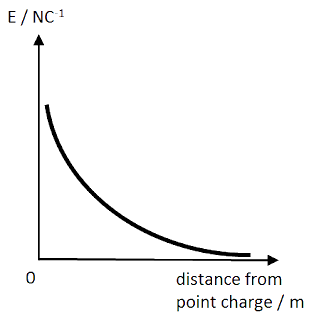
If charge q is in a field that arises from another single point charge Q:
Example:
A point charge has a magnitude of -0.48 nC. Calculate the potential 1.5m from this charge.
Potential inside a hollow conducting charged sphere
Outside a charged conducting sphere, the potential is indistinguishable from that of a point charge. This is because the field lines leave the surface of the sphere at 90°, therefore they are radial.

The field inside the sphere
The surplus charge must be on the outside of the sphere because the charges will move until they are as far apart as possible, the charges will move until they are all in equilibrium (equidistant from the surface).
Gravitational potential

For a field due to point mass M with a point mass m at a distance r from it:
The potential energy of m at distance r from mass M:
The forces are always attractive for gravity, therefore the potential is always negative with a maximum of zero at infinity (horizontal asymptote).
Gravitational Fields - video explanationPotential inside a planet
The inner solid sphere (inside the planet) is an Earth with a smaller radius. The gravitational field strenght of that inner sphere is given by:
The outer shell does not give rise to a gravitational field.
Orbiting
Linear orbital speed:
Orbital period:

Polar orbit
An orbit relatively close to the Earth's surface (100 km). The satellites often orbit over the poles. The linear speed of the satellite is about 7800 ms-1.
Geosynchronous satellites
They orbit at large distances above the Earth. The orbital period is around 24 hours, so they can be made to stay in the same area of the sky, following a figure-eight orbit.
Geostationary orbit
It is a special kind of geosynchronous orbit that orbits above the Equator and will seem stationary when viewed from the surface. They are used for communication purposes and collecting images weather forecasts.
Classes of orbits - videoEscape velocity
Escape velocity is the minimum speed needed for a free, non-propelled object to escape from the gravitational influence of a massive body, that is, to achieve an infinite distance from it.
Escape velocity is roughly 12000 ms-1 for Earth.
 Escape velocity - video explanation
Escape velocity - video explanation
Charges moving in magnetic fields
In a magnetic field the force is always at right angles to the motion of the electron (Fleming's left hand rule) and so the resulting path of the electron is circular.
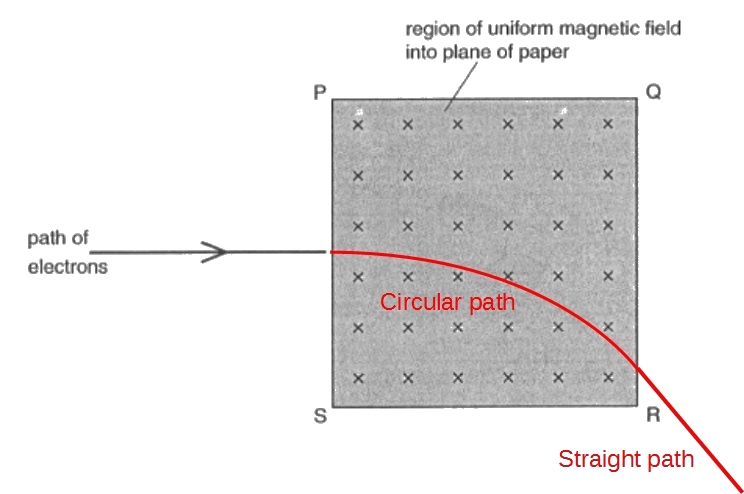
Force acting on electron:
Radius of the circle due to centripetal force:
 Electrons In A Uniform Magnetic Field - video
Electrons In A Uniform Magnetic Field - videoMotion in a magnetic field - video
Charges moving in electric fields
Electron follows a parabolic path.
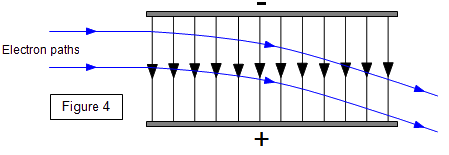 Electron moving in a uniform field
Electron moving in a uniform field
Charges moving in magnetic and electric fields
Combining electric and magnetic fields at right angles to each other:
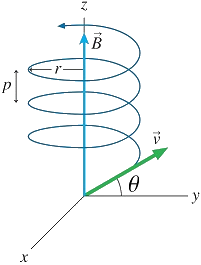
There is some speed where the forces are balanced. This arrangement is a velocity selector.
Bainbridge mass spectrometer - videoTopic 10 Problems
Number of correct answers: